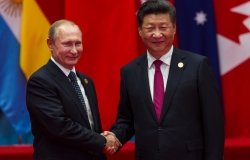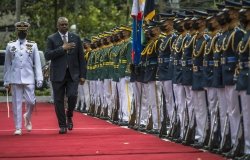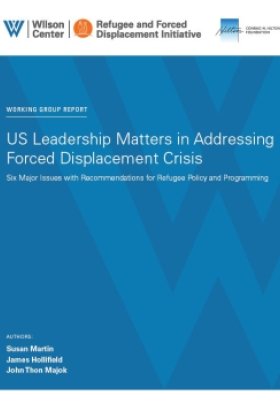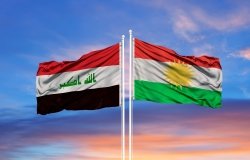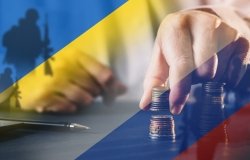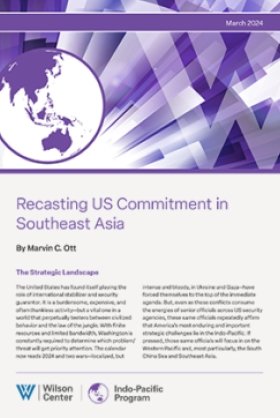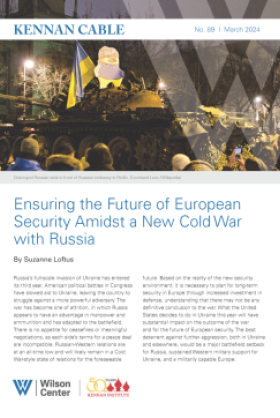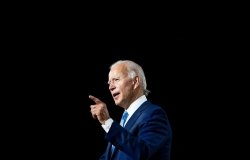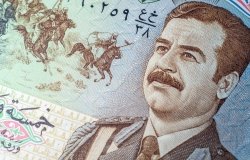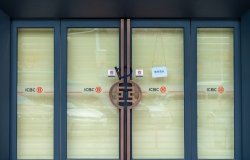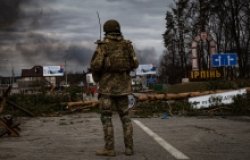What Asia Wants From Tillerson's Visit
In a key test in his new role as U.S. Secretary of State, Rex Tillerson heads to East Asia this week at a time of tension and transition in the region.
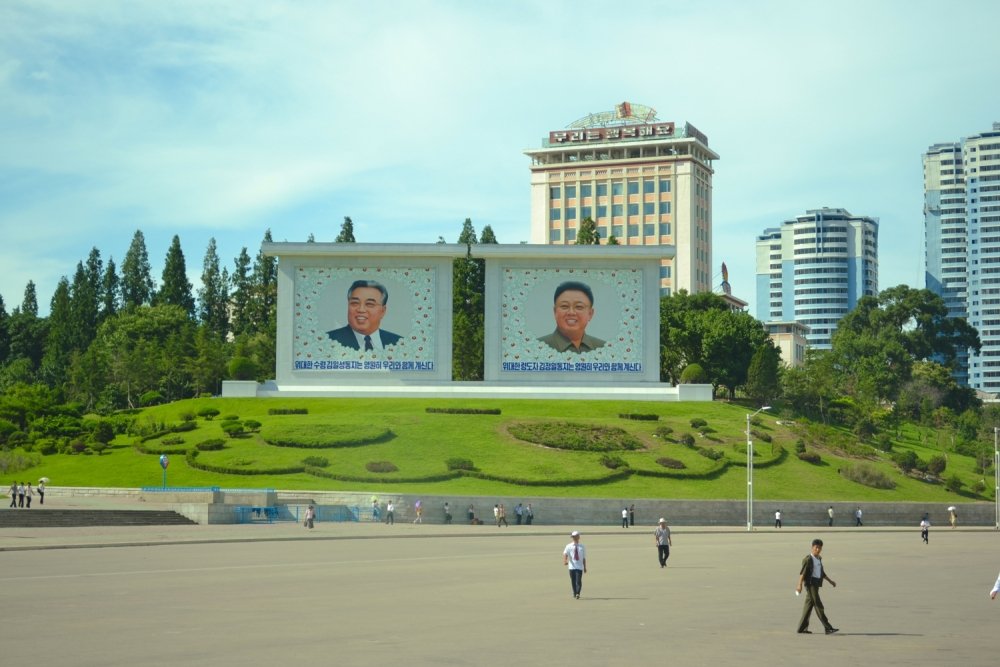
SEOUL, South Korea — In a key test in his new role as U.S. secretary of state, Rex Tillerson heads to East Asia this week at a time of tension and transition in the region.
At first glance, the objective seems clear. Washington, Beijing, Seoul and Tokyo have at least one urgent matter at hand: How to stop North Korea from building ballistic missiles and nuclear weapons at breakneck speed, and how to prevent war from breaking out.
But coming to an agreement on how to stop North Korea won't be easy.
This is a region with a complicated history and nations with bitter grudges that simmer just beneath the surface. Tokyo and Seoul still are feuding over apologies and reparations for Japan's colonial occupation of Korea from 1910 to 1945, and the Korean War of the 1950s still has not formally ended. And all of China's neighbors chafe under that big power's dominance.
How the U.S. intends to position itself in Northeast Asia's complicated geopolitical game remains a question. President Trump has not unveiled his foreign policy for Asia, meaning all sides will be looking to make their cases, as well as seeking answers, during Tillerson's visit.
Tillerson may be seeking to gauge or sway regional response to the array of options on North Korea reportedly under consideration by the Trump administration – including, perhaps, the most controversial: a military strike on North Korea.
Here's a look at what the players in Northeast Asia will be looking for when Trump's top emissary visits this week:
Japan
Tillerson's first stop is Japan, which still is seething over a North Korea missile launch on March 6 that sent four projectiles careening toward the country. Three landed within Japan's exclusive economic zone off the coast of Akita Prefecture, just hundreds of miles from the shore.
The launch marked a development of a new kind in North Korea's illicit weapons program: simultaneous launches. By firing four at once, North Korea appears to be mocking the debate over the installation of U.S. missile defense shields that intercept just one missile at a time.
North Korea boasted that the test was meant to threaten U.S. military bases in Japan.
But the secondary objectives were likely to punish Japanese Prime Minister Shinzō Abe for siding with Trump and to drive a wedge between the allies. Abe was in the U.S. golfing with Trump when North Korea's Kim Jong Un ordered the launch of a ballistic missile on Feb. 12 in a very pointed message to both about the perils of ignoring Pyongyang.
Tokyo will seek assurances that Washington remains committed to its defense. But Abe may also use the provocations to push for even more domestic military spending, making the countries Japan once occupied nervous.
South Korea
Seoul will want affirmation from Tillerson that the long-standing "U.S.-ROK alliance" remains intact, despite Trump's (inaccurate) campaign characterization of South Koreans as freeloaders of U.S. military support. And they will want to exert influence on Trump's nascent North Korea policy.
South Koreans worry about Trump policy. But they've been preoccupied for months by their own political upheaval: a corruption investigation that implicated the president, prompted months of protests in the streets by citizens calling for her ouster, and eventually led to her impeachment and removal from South Korea's presidential Blue House this past weekend.
The end of Park Geun-hye's presidency has plunged South Korea into another period of transition and extended political paralysis: 60 days of presidential campaigning before a snap election in early May. Already, opposition leaders are calling on the prime minister now serving as acting president to refrain from implementing Park-era policies, including installation of a controversial American missile defense system.
The U.S. Embassy in Seoul, meanwhile, is among overseas missions currently without an ambassador, meaning there is neither a U.S. ambassador nor a South Korean president in Seoul at a time of heightened tensions.
Tillerson, whose visit comes during annual joint U.S.-South Korean military drills, will want to use the occasion to visit the Demilitarized Zone in a photo op that is more a show of solidarity and strength than a chance to peer across the border into North Korea.
China
Tillerson's last stop in Asia is his biggest, where he may sit down with China's Xi Jinping.
Trump has been clear about wanting Beijing to work harder to rein in North Korea.
China has already slapped Pyongyang on the wrist by suspending coal imports for 2017, and has shown its commitment to playing a mediation role.
But Beijing is not about to do Washington's bidding. It's important to remember that much of the tension in the region today stems from the historical Cold War standoff between the U.S. and China.
China sent troops into Korea in 1950 to defend the North Koreans against the U.S.-led United Nations forces. They didn't want U.S. troops on their border then, and they don't want them there now. North Korea serves as a buffer zone between China and the U.S.
However, the U.S. is getting too close for China's comfort by installing the missile defense system known as THAAD, the Terminal High-Altitude Area Defense.
China has warned South Korea that approving the installation of the U.S. missile defense shield, which it considers a threat to its own security, is a mistake. Beijing has made clear that it will move to protect itself — and find ways to put upstart South Korea in its place — if the decision is not reconsidered. The fallout has already begun commercially and culturally.
THAAD will be a key point of discussion, and contention, between Tillerson and his Chinese counterpart, Wang Yi, among other thorny issues.
North Korea
Finally, there's North Korea.
Tillerson's visit is a threat to Pyongyang, which does not want to see regional powers gang up against it, especially in the wake of recent provocations and the alleged assassination in Malaysia of Kim Jong Un's half-brother, which Malaysian authorities blame on North Korean agents.
There are those in North Korea, however, who will be watching the developments with a certain sense of satisfaction. Pyongyang wants to get on Trump's radar — the nuclear tests and missile launch are in part meant as a signal to Washington, D.C. — and the more talk about North Korea, the better.
Regardless, North Korea will aim to use the visit to its advantage domestically.
Tough words from Tillerson (though the new secretary of state has kept a low profile with the media) will play into the North Korean narrative that the U.S. is seeking to invade or attack the North.
Pyongyang is masterful at using global condemnation, and particularly the threat of war, to bring its people together. Heightened tensions and headlines warning of war give North Korea more reason to build bombs and missiles.
The opinions expressed here are solely those of the author.
This article was originally published in US News and World Report.
About the Author
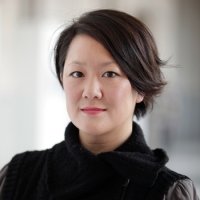
Jean H. Lee
Journalist and former Pyongyang Bureau Chief, Associated Press

Hyundai Motor-Korea Foundation Center for Korean History and Public Policy
The Center for Korean History and Public Policy was established in 2015 with the generous support of the Hyundai Motor Company and the Korea Foundation to provide a coherent, long-term platform for improving historical understanding of Korea and informing the public policy debate on the Korean peninsula in the United States and beyond. Read more

Indo-Pacific Program
The Indo-Pacific Program promotes policy debate and intellectual discussions on US interests in the Asia-Pacific as well as political, economic, security, and social issues relating to the world’s most populous and economically dynamic region. Read more
